In the past few decades, the world has started to pay more attention to the vibrant contemporary art scene of Japan. Today, a fascinating blend of uniquely Japanese traditions and more modern cultural phenomena present themselves in the works of Japanese contemporary artists.
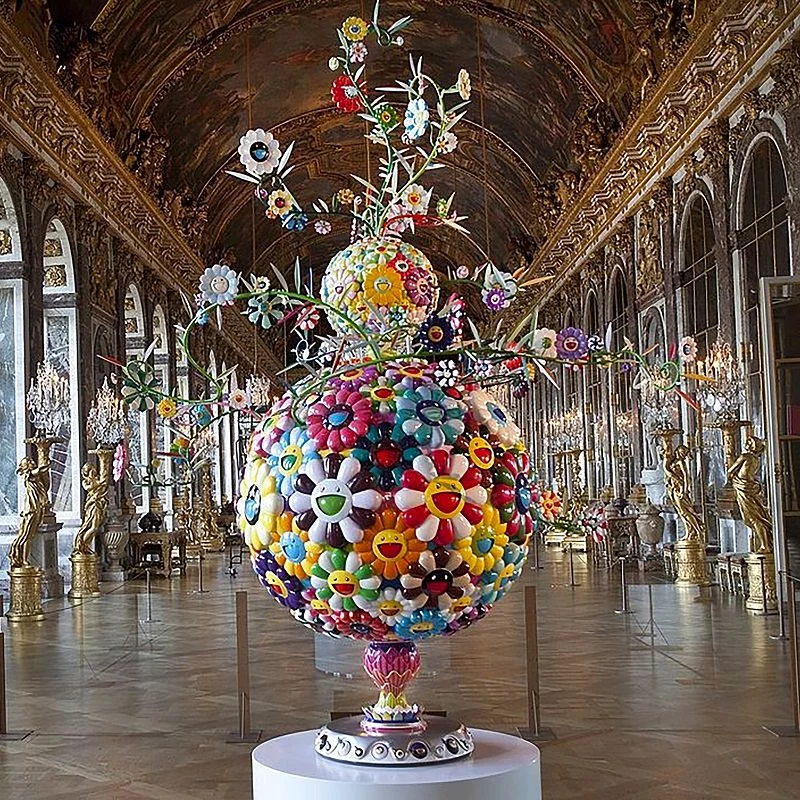
A Brief History of Japanese Art Tradition
Paying proper homage to the rich tradition of Japanese art is a huge task, however, highlighting the major milestones from the past few centuries may be helpful to understand Japanese contemporary art.
During the Edo period, Japan adopted isolationist policies that heavily shaped its culture. There was a common enjoyment of leisure and arts, through which popular forms of ceramics and woodblock prints (ukiyo-e) originated.
One of the most iconic artworks from this period is The Great Wave off Kanagawa (1829–33), a color woodblock print by Hokusai. The print demonstrates the common themes (nature, religion, fashion, and Eastern Asian philosophies) that traditionally influenced subjects in Japanese art.
After 214 years of limited relation to the rest of the world, Japan opened its borders to foreign influence in 1868, marking the beginning of the Meiji Restoration, a period of transformation, modernization, and westernization within Japanese society.
This interaction went both ways—starting especially in the 1880s, Western artists including Edgar Degas, Vincent van Gogh, and Mary Cassatt were inspired by Japanese aesthetics, an influence which is described in the term Japonisme.
The Vibrant Post-War Art Wave in Japan
After the end of World War II, Japan underwent a significant period of change in its art scene. The bombing of Hiroshima and American military presence provoked themes of rebellion, self-determination, and destruction across many art forms of the country.
One particular movement to point out is Gutai, a Japanese avant-garde collective formed in 1954, whose radical ideas and approaches influenced conceptual and performance art of the 1960s and 1970s across the globe.
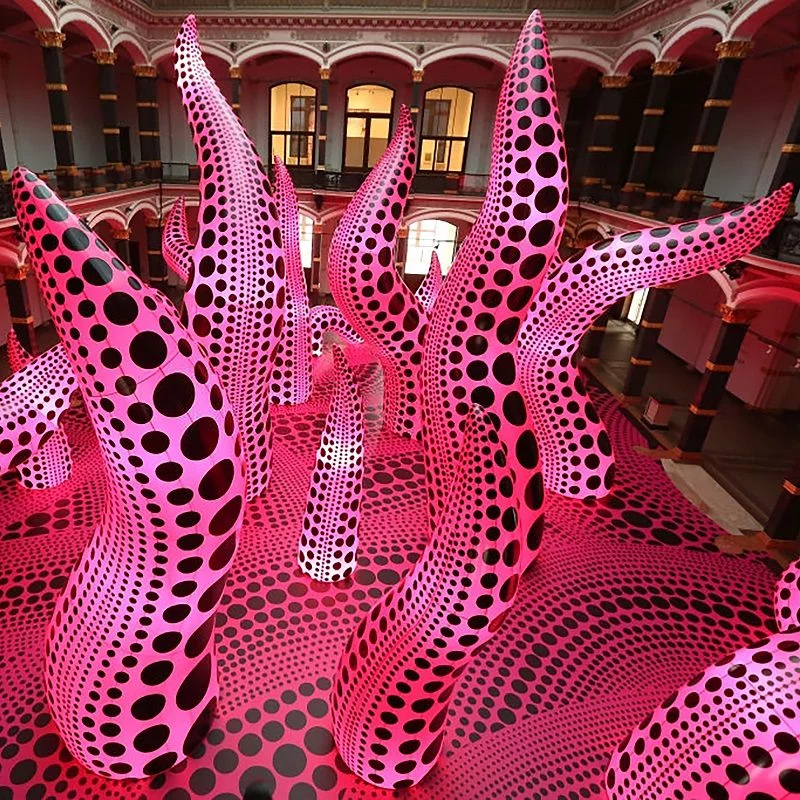
Particularly the 1990s were when Japanese art was trending internationally. Japan experienced more art fairs, major shows, and attention on the global stage, especially through a select few artists such as Yayoi Kusama and Takashi Murakami.
A 1994 exhibition titled Japanese Art after 1945: Scream Against the Sky, hosted in Japan, New York, and San Francisco, brought Japanese post-war art into the minds of academics and curators across the globe.
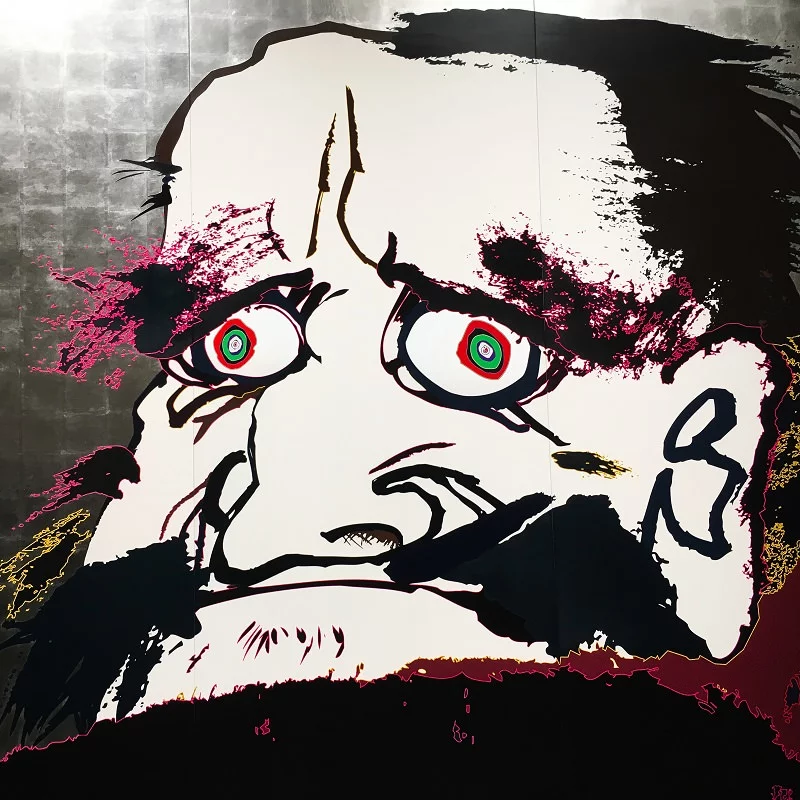
Japanese Contemporary Artists: The Icons
Takashi Murakami, referred to as the “Andy Warhol of Japan” merges fine art, pop, and consumer culture, and Japanese tradition in his well-known art practice. Murakami coined the term superflat to describe Japanese artists’ visual vocabulary and societal role. The term has multiple meanings: on the one hand, it references the visually flat aesthetics of traditional Japanese art. On the other hand, it makes a statement on the shallowness of consumer culture.
Yayoi Kusama is a highly-sought after artist primarily working in sculpture and installation-rooted conceptual art. She creates intense immersive installations, often using her signature polka-dots. The “obsessive” use of the polka-dots reflects her way of coping with mental health problems.
Having done countless shows in contemporary art museums over the past 60+ years, Kusama continues to occupy the global arena. Her latest show KUSAMA: Cosmic Nature at the New York Botanical Garden has been a great success. Her new exhibition, Yayoi Kusama: Infinity Mirror Rooms, will be on display at Tate Modern through June 2022.
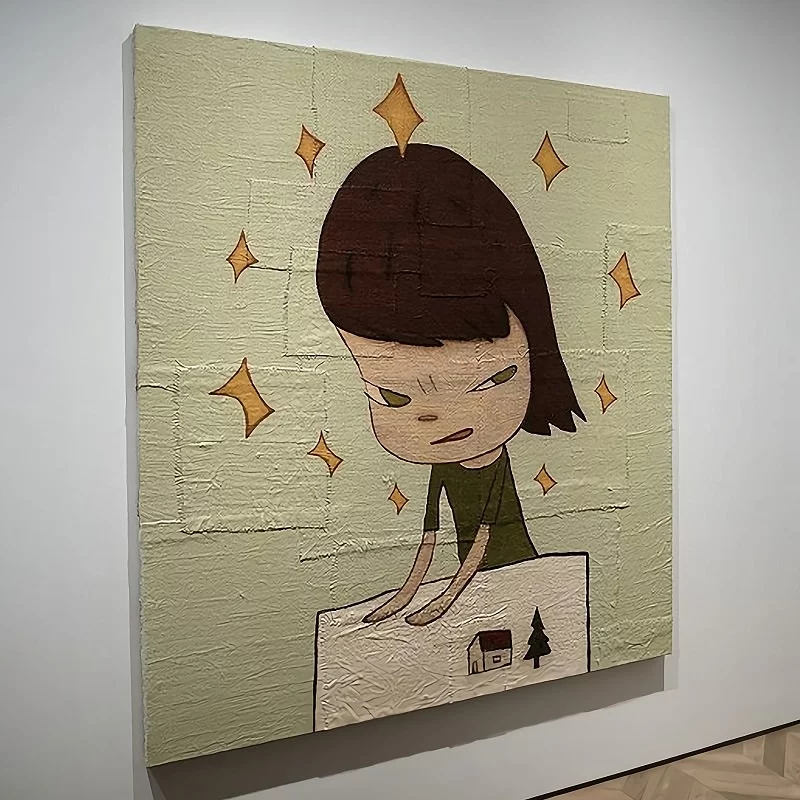
Yoshitomo Nara is a pioneering figure in contemporary art who is well-known to paint children and their emotions. Influenced by traditional woodblock prints and western fairytales, his artworks display a “remix culture” of western influence and traditional Japanese art. In 2019, Knife Behind Back sold at a contemporary art auction for $25 million.
Chikako Yamashiro lives and works in Okinawa, an island that has been subject to heavy American military presence since WWII. Much of her work questions the past and highlights lesser-known aspects of Okinawa’s contemporary culture. She is a multimedia artist working primarily in performance and video—her most recent exhibition was Image Narratives: Literature in Japanese Contemporary Art at the National Art Center, Tokyo in 2019.
Yasumasa Morimura is an appropriation artist who explores the complicated relationship of Western and Japanese cultures. He directly references artists such as Van Gogh and Magritte, and questions identity, tradition, and concepts of the “male gaze”. After World War II, many Japanese artists referenced Western culture in their work, a trend which Yasumasa Morimura certainly took part in by continually diving into the complexities of identity.
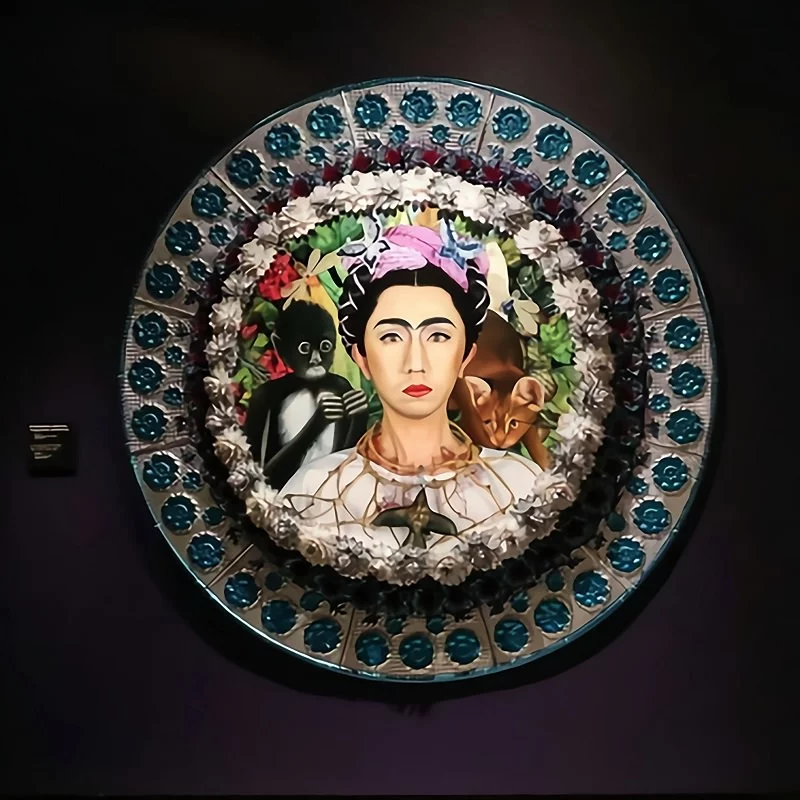
Contemporary Japanese Prints
Prints are Japan’s internationally most well-known and celebrated medium. The classic woodblock prints as we know them, showing the geisha, samurai, and Mount Fuji became prevalent during the Edo period in the 17th century. However, Japan had a long past of printmaking: it was used for centuries to serve the mass communication needs of Buddhism and later Christianity.
In the early 20th century, the European printmaking techniques of etching, engraving, and lithography were introduced to Japan. This allowed refinement of Japanese printmaking, enhanced by the use of the famous Japanese handmade paper that combines strength and delicacy.
Japanese prints reflect the lively and vibrant face of their culture. Materials and methods of printmaking are fully in line with their style: masses of flat color and texture, decorative exuberance, detailed finishes, rich pigments, and textured surfaces pay tribute to Japanese abstract art.
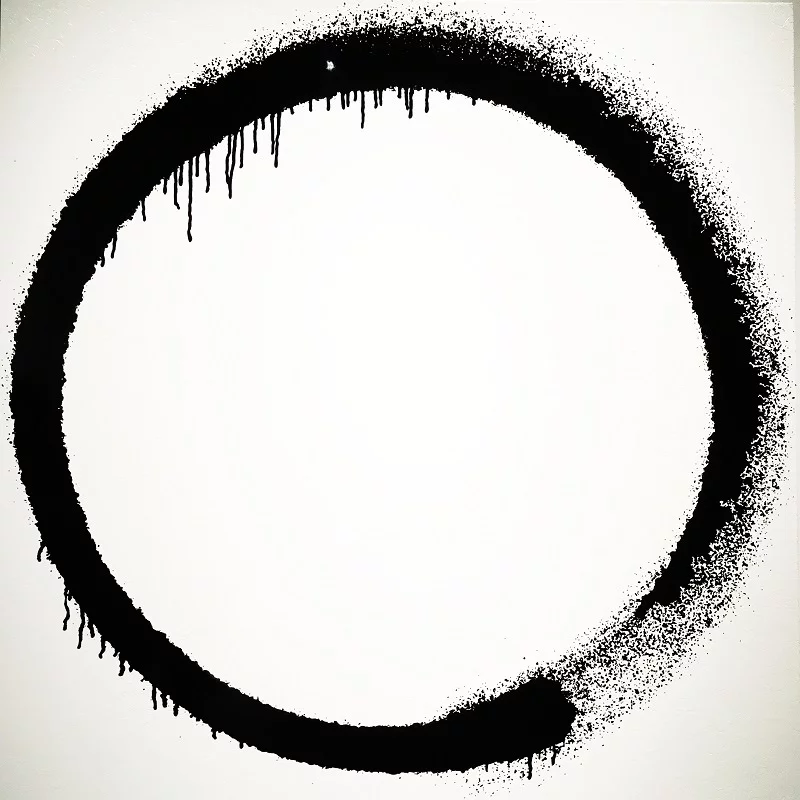
Today, Japanese contemporary artists demonstrate profound technical diversity and virtuosity in the field of printmaking. The common theme is to break away from the tradition by using different materials and processes. Some of the approaches include using European paper, wax paper, cardboard, string, and other found materials to print, taking a traditional theme to a modern conclusion, or merging photography and inkjet digital processes.
While Western audiences recognize star print artists such as Tsuruya Kokei or Clifton Karhu through their works in museums, there are other prominent names to know representing the current printmaking scene in Japan such as Nobuaki Onishi, Koichi Kiyono, Kouseki Ono, Arata Nojima, and Shoji Miyamoto.
Contemporary Japanese Ceramics
Another popular medium of Japanese contemporary art embraced and appreciated by the art world is ceramics. Japan’s centuries-old tradition of pottery focusing on utility and function was transformed in the 20thcentury. This radical shift was predominantly shaped and enabled by the post-war modern movement of ceramicists, Sodeisha.
Sodeisha’s opposition against function resulted in ceramics shifting its focus to form, becoming more sculptural, and even abstract. Thus, Japanese ceramics has become a fine art. Two important members to know from Sodeisha are Hoshino Satoru and Akiyama Yo. They are the pioneers of ceramic sculptures in Japan. Focusing on the themes of creation and destruction, both artists have redefined how potted clay is treated.
Leveraging its long tradition yet reinventing it through diversity, Japan has today become an international hub for contemporary ceramic art. The extension beyond the father-son, master-apprentice dynamics of pottery enabled the gradual inclusion of women to the field as well as contemporary artists with academic training from Japan and abroad.
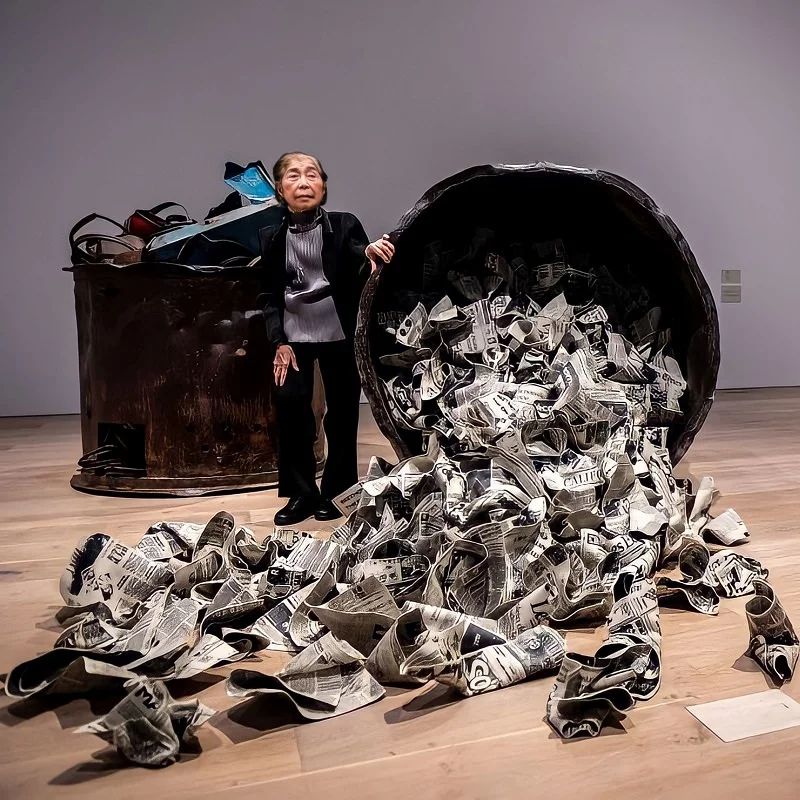
One of the most prominent representatives of these women artists is Kimiyo Mishima, who as a sculptural ceramicist use silkscreen renderings to create printed matter like newspaper and food packaging, creating awareness for the world’s growing trash problem.
Younger generation, mid-career contemporary Japanese ceramicists are creating even more technical and expressive works. Kazuhito Kawai’s geometric and polychromatic pieces that are captured in their dripping state, Hattori Makiko’s meticulously additive and repetitive processes, and Keita Matsunaga’s unique textures and photographic surfaces demonstrate that Japanese ceramics will continue to inspire the art world.
Contemporary Art: The Artery of Japanese Culture
Blending its rich art history with Western style and techniques, Japanese contemporary art is going beyond the illusionistic approaches of the past and pushing the boundaries of the conceptual. Embracing technology while never abandoning fastidious details, Japanese contemporary artists are nurturing fashion, design, video, and film, and reconfirming their country’s global status: the perfect petri dish for culture.



